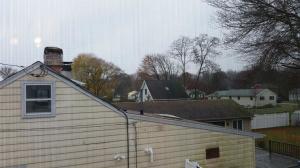Have you read chapter 4 of The Great CT Caper yet? If not, you’ll certainly want to after getting an inside look at how chapter 4 author Laura A. Woollett conducted her research for the Caper. Welcome, Laura!
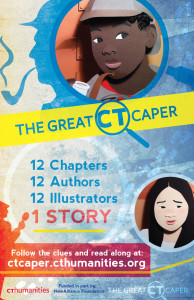 Facts In Fiction
Facts In Fiction
by Laura A. Woollett
I’ve been thinking a lot about how facts figure into the writing of fiction. If your fictional story is set in a real place or has real people in it, how much creative license do you have?
Research is a crucial element to creating historical fiction. The reader must feel as if he or she is IN that time and place. That means getting details such as clothing, cuisine, and architecture correct for the time period. But what about realistic fiction that takes place in the current time period? What about in a story like The Great CT Caper, which is a fictional mystery set in a real location that young readers can visit for themselves?
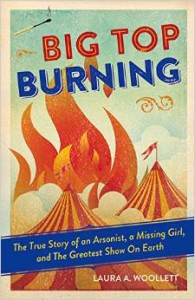 My first book, Big Top Burning: The True Story of an Arsonist, a Missing Girl, and The Greatest Show On Earth (Chicago Review Press, June 2015) is nonfiction. Every detail was meticulously researched through primary source documents. I’m accustomed to gathering facts and presenting them in an engaging story format. As I wrote my chapter for The Great CT Caper, I wondered how close I had to stick to the facts of the real-life setting.
My first book, Big Top Burning: The True Story of an Arsonist, a Missing Girl, and The Greatest Show On Earth (Chicago Review Press, June 2015) is nonfiction. Every detail was meticulously researched through primary source documents. I’m accustomed to gathering facts and presenting them in an engaging story format. As I wrote my chapter for The Great CT Caper, I wondered how close I had to stick to the facts of the real-life setting.
I began thinking about this project by taking a trip Gillette’s castle. It was a beautiful, sunny September day, and flowers were still blooming. The Connecticut River rushed by far below the castle’s teeth-like walls. Inside, I passed through a secret passage and leaned over the balcony to look down on the great hall. I touched the walls covered in a woven hemp-like material and counted the 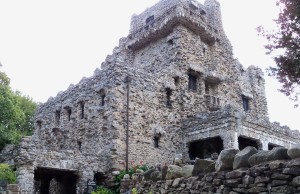 many carved wooden doors, each one unique. Fiction feels its most real when the sensory details are just right. Since our story would take place at this real location, it felt important for me to experience what Li-Ming and Thomas would first hand.
many carved wooden doors, each one unique. Fiction feels its most real when the sensory details are just right. Since our story would take place at this real location, it felt important for me to experience what Li-Ming and Thomas would first hand.
Including details from the castle was important, but I did not want my chapter to sound like a report, so stuffed with facts it would appear I were teaching kids about the castle rather than telling a story that happened to take place there. I had to pretend the castle wasn’t a real place at all, but an imagined one, and like in any well-written fiction, I would only include details that gave the essence of the setting and furthered 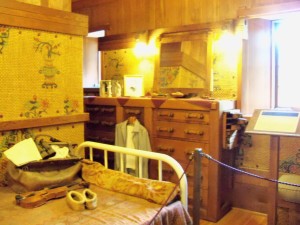 the plot. If the detail was not important to the scene, I cut it, even if it were true. Somewhere in Chapter 4, I took a bit of artistic license. Can you tell where?
the plot. If the detail was not important to the scene, I cut it, even if it were true. Somewhere in Chapter 4, I took a bit of artistic license. Can you tell where?
Whether writing fiction or nonfiction, writers want their scenes, their characters, and their stories to ring true. Here are my goals for any writing project:
- Do your due diligence.
Go online and research reputable sites that have information on the time and place where your story is set. Better still, go to a library and ask a librarian. Best case, if you’re using a real setting you don’t know much about, visit. Take notes and pictures. Talk to the experts or people living there.
- Be true to the time and place.
This means no anachronisms. If trolley cars had stopped running through Hartford during the time of your story, you cannot have your characters riding on them. Get the clothing right, the types of food, the music people listened to, and the world events that shaped their lives.
- Do your best.
In the past, I’ve wrung my stomach into knots worrying that I’ve messed up some factual detail. And in my experience, if I’m feeling this way, it means I’ve definitely done #1 and 2, so it’s time to let that worry go.
 About the Author:
About the Author:
Laura A. Woollett has a Master’s degree in Children’s Literature from Simmons College and is a full-time writer and editor of literacy curriculum for children in kindergarten through grade 12. Her first book for middle-grade readers, Big Top Burning: The True Story of an Arsonist, a Missing Girl, and The Greatest Show On Earth, a nonfiction account of the 1944 Hartford circus fire, will be published by Chicago Review Press in June 2015. Laura is the author of Chapter 4 of The Great Connecticut Caper, a middle-grade serialized whodunit published online through the CT Center for the Book, January–June 2015.


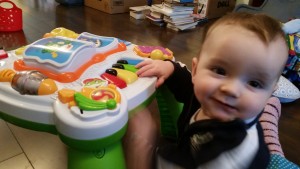
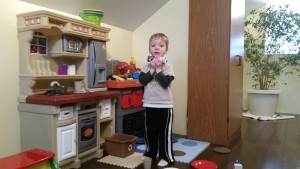

 My first book,
My first book,  many carved wooden doors, each one unique. Fiction feels its most real when the sensory details are just right. Since our story would take place at this real location, it felt important for me to experience what Li-Ming and Thomas would first hand.
many carved wooden doors, each one unique. Fiction feels its most real when the sensory details are just right. Since our story would take place at this real location, it felt important for me to experience what Li-Ming and Thomas would first hand. the plot. If the detail was not important to the scene, I cut it, even if it were true. Somewhere in Chapter 4, I took a bit of artistic license. Can you tell where?
the plot. If the detail was not important to the scene, I cut it, even if it were true. Somewhere in Chapter 4, I took a bit of artistic license. Can you tell where?

